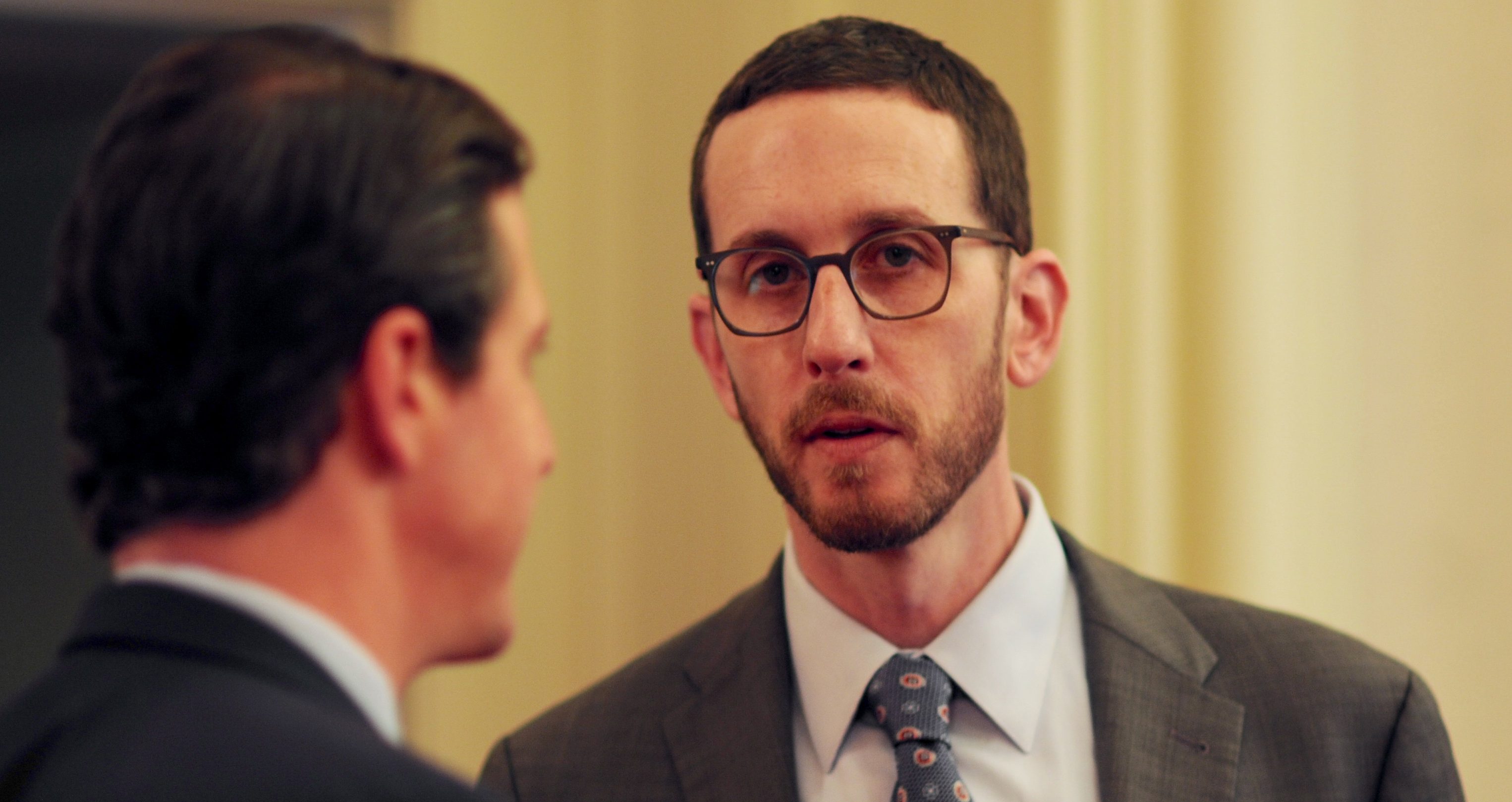
Elementary Students in Class. (Photo: SB Professional/Shutterstock)
Public Money for Teacher Housing
Is that okay?
By Thomas Buckley, July 24, 2024 3:27 pm
Teachers in California typically make good living.
State statistics show that last school year, the average salary was about $95,000, with the median pay coming in at about $87,000.
The median salary for everyone in the state is about $77,000.
And teacher benefits packages are – let’s be blunt – amazing. Excellent health care – even through retirement – and a teacher who worked for 25 years gets a pension check for about $4,000 a month, far more than a person collecting Social Security who made the same wage. The cost of those benefits is about $30,000 a year, making teacher total compensation about $120,000 annually.
Then why are school districts around the state building – or at least selling bonds for – subsidized housing for teachers?
For example, in 2022 the Jefferson Union High School District – which serves Daly City, Brisbane, Pacifica and other communities in that south Bay Area region – built a 122-unit apartment building in Daly City.
Most of the units – about half one-bedroom apartments with the other half being two and three bedroom units – are filled by “certified” staff, like teachers and counselors. The rest are made available to other district employees, such as bus drivers and office staff.
The project cost about $75 million dollars and renters will pay about half of whatever the current “market rate” rent for their type of unit is in the area. Right now, Daly City one-bedroom apartments average about $2,600 a month, meaning school staffers could receive an annual “discount” of about $15,000 per year.
Interesting note – the cost works out to about $600,000 per unit, significantly less than a recently approved Santa Monica $1 million-per-unit homeless housing project. The cost is, however, more in line with newly-opened $600,000 per unit (90% studios – think extended stay hotel room) Weingart Center “permanent supportive housing” project for the homeless.
The homeless are worth more than teachers? Hmm.
In April, Pasadena Unified School District voted to convert the recently-closed Roosevelt Elementary School site to staff and teacher housing. The project will be funded with the proceeds of a parcel tax measure on the ballot in November that would hike property taxes by $60 per $100,000 in assessed valuation.
In 2020, Chula Vista Elementary School District got a $300 million bond passed which included funds for a number of different projects, including teacher, or “workforce’” housing.
The funds so far have not been spent on teacher housing, as the District is issuing the bonds in “series.” So far, money has gone to install solar panels at schools and other facilities and for repairs.
The “series” containing the housing funds has been recently issued and includes at least $30 million for teacher housing in this round of funding. The tax, which passed by the slimmest of margins, getting only one-half of one-percent of the vote more than what was needed to succeed, is $30 per parcel per every $100,000 of appraised value.
The state allowed school districts to get into the housing business in 2016, even exempting them – like the schools they build – from having to follow city and/or country building design, siting, and – to an extent – zoning regulations (as a former mayor/city councilmember, you cannot imagine how problematic that actually is., especially on city traffic patterns)
There is also a bill currently wending its way through the legislature that would expand the type of people who can live in school district housing to include employees of non-profit groups that work with the district.
So why is discount teacher housing a “thing” if they – on average – make more than other people?
Is it ever appropriate to give something extra to government employees just because they are government employees? If a district (or city – many cities require their city manager to live in there) decides staff must live in the district because it’s better for the students, then a case can be made for adjusting pay in expensive locations. It’s a requirement for the job and district policy.
But other than that?
The reasons typically given are teacher retention and recruitment:
“(The project) came from the necessity to retain and recruit excellent staff dedicated to serving the students of this community,” says Tina Van Raaphorst, deputy superintendent of Jefferson Unified when the project opened. “Though staff truly enjoyed working for this district, they could not afford to stay in the area to do so.”
The Daly City project architect goes beyond just living in Daly City, but living well. “Along with the district, we wanted to honor the critical work of educators by offering comfortable spaces that feel like a haven at the end of the day,” the architect said.
As to retention, the argument falls flat, unless a district demands teachers live in the district, which carries a certain amount of justification. If that is the reason, then an annual seperate pay “bump” could be an alternative.
The recruitment angle, though, may make more sense. While the average pay hovers in the $80,000 to 90,000 range, younger teachers start out at about $50,000 a year. In California, that is not that great, especially in coastal and/or urban areas.
For example, in Daly City’s average rent would eat up nearly 60% of a new teacher’s pay. But, considering how much school districts rely on seniority, it is unclear if restricting the units to new employees is an aspect of the plans.
That being said, the average Daly City teacher pay is about 20% more than the average pay of the rest of Daly City residents.
And don’t forget the bennies.
- Benefit Fraud Problems and Solutions - November 7, 2024
- A Little Exit Poll - November 5, 2024
- Tomorrow’s Headlines Today! - November 5, 2024





NO! Besides being ridiculous and unnecessary, it’s not even workable. They’re going to accommodate everyone who wants these freebies? Don’t THINK so!
Then, when citizen watchdogs have spent a good 2 -3 years of life knocking this ridiculous stuff down in the local district (or so we thought) back these vultures come, again, and again, and again.
However they cannot use the “poor penniless teacher” argument anymore as they have in the past because, as Thomas Buckley pointed out, teachers now make A LOT of money and have A LOT of benefits. Health care entirely covered, for instance. For the whole family, as I recall, including live-in boyfriends and such! So-called “non-profits” make even more. “Non-profit” has long been a misnomer.
These people don’t need anymore government dollars and benefits than they are getting already. And as you know, today’s teachers and public schools are simply NOT what they used to be (with some exceptions). As you know.
Really, the NERVE. Dem/Marxists behind it, of course. NO to all the parcel taxes and etc. that will be on your Nov ballots. Just say NO to all of it.
To be cynical: “affordable housing” element law forces municipalities to allow new developments, and if they allow clean cut teachers to occupy them, then the trashy riffraff need not apply.